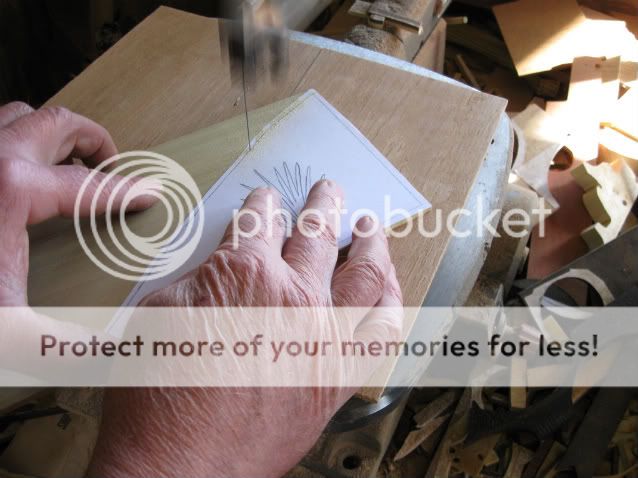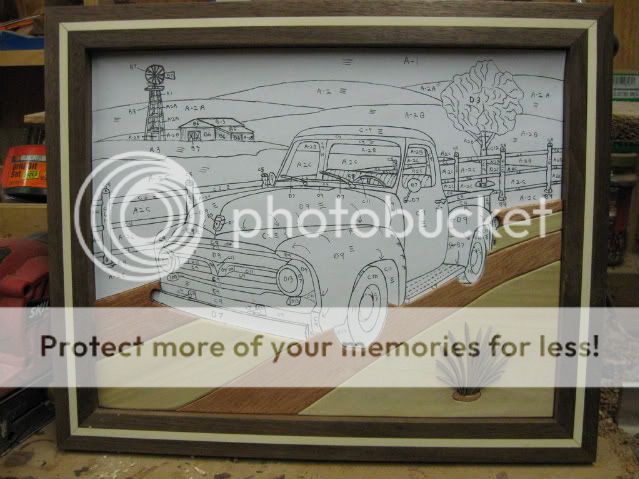By now you all have seen the intarsia of the 1953 Ford F100 pick-up that I recently completed and maybe you were wondering how I go about creating such a piece .
When my son was building my web-site he asked me to give a description of what intarsia is and I told him to look at my pieces and come up with a definition. This is what he wrote—- Intarsia – the experience of merging Nature’s beauty with human ingenuity; finding the perfect combination of woods to express an object or a moment in time; a three- dimensional perspective of the world using natural colored and varied woods; painting with wood .
I got the picture for the project from my buddy Art in Texas who wanted me to design a kit for him. Art is 93 years old and still scrolling strong.It is a picture of a 1953 Ford F100 pickup that belongs to a friend of his. I designed the pattern with a background to look like a scene from a Texas farm. I’m using an 11”x14” walnut frame with holly accents and 13 different woods ranging from 1/8” – 3/8” in thickness.
Hope you all enjoy seeing it come to life.
This is the photo of the 1953 Ford F 100 pick-up that I will use in this project. It shows that I have traced the outline using carbon paper onto regular paper.
This next photo shows the outline of the truck but not all details have been added yet.
This next pic shows that I have cut the outline of the truck out and pasted it to my new pattern sheet. It also shows that I have drawn the frame perimeter lines.
This is what the finished pattern looks like after I have drawn in the background and added all of the details that are needed to do the intarsia including the woods list.
This next photo shows the woods that will be used to create this intarsia.
The next entry will be about how to make the frame for this project










 Reply With Quote
Reply With Quote



























